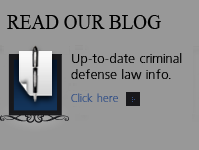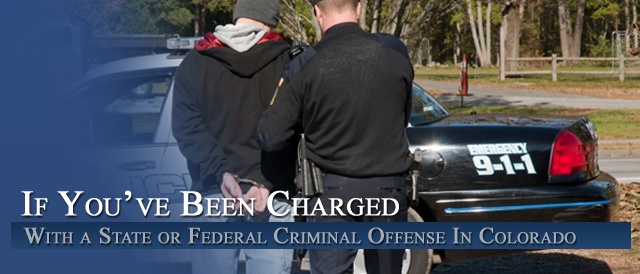
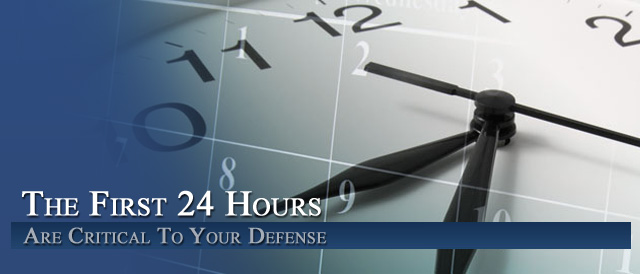
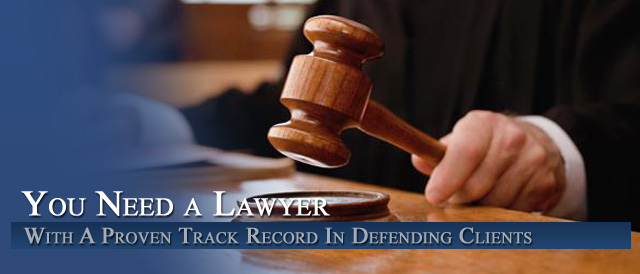
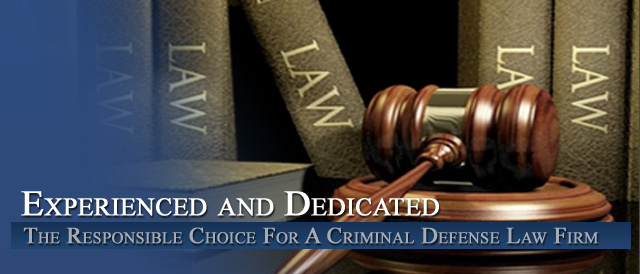

WHAT IS HEARSAY ANYWAY?
Hearsay is defined in CRE 801 as “a statement, other than one made by the witness while testifying at the trial or hearing, offered in evidence to prove the truth of the matter asserted.” CRE 802 bars the use of hearsay testimony, subject to certain exceptions discussed below. An easy example is that a witness may not testify that the witness heard the bank teller say that the defendant robbed the bank. If the prosecution wants to introduce testimony that the bank teller can identify the defendant as the robber, then the prosecution needs to put the bank teller on the stand.
The ban on hearsay testimony is premised on several beliefs. First, it is thought that a jury can form a much better opinion about the reliability of the person making the statement – the declarant – if the jury can see and hear the declarant first-hand. Second, it is believed that subjecting the declarant to cross-examination can further improve the ability of the jury to determine the reliability of the declarant. Finally, at least in criminal trials, the constitution provides that the defendant has a right to confront and cross-examine the witnesses who are testifying against him.
The term ‘statement’ means more than an oral declaration. If a witness engages in conduct that is designed to be assertive, that conduct may be considered a statement for the purposes of the hearsay rule. Thus, for example, if an eyewitness to a crime is shown a lineup of suspects, asked if the perpetrator is in the lineup, and points to an individual, that pointing will generally be considered to be a statement.
However, only those statements that offered to prove the truth of the matter asserted are barred by the hearsay rule. Thus, for example, if a statement is offered only to prove that the words were spoken, not that the words were true, the statement would not be hearsay. This situation may arise in a contract case, where certain words (I accept) may create a contract even if the person speaking the words did not intend the words as true. Other examples of statements that are not offered for their truth include statements that are offered to show the state of mind of the person making the statement (“I’m so mad at you I could explode!” Is not offered for its literal truth, just to show anger) or the effect the statement had on the person hearing the statement (the person hearing the above statement is understandably frightened).
Certain statements are specifically excluded from the definition of hearsay. The prior inconsistent statements of a witness (previous statements that inconsistent with the trial testimony of the witness) are excluded from the definition of hearsay. Similarly, the prior consistent statements of a witness are excluded from the definition of hearsay when they are offered to rebut a claim that the witness has previously made inconsistent statements or that the witness has been tampered with.
Additionally, the statements of a party-opponent are excluded from the definition of hearsay. A party-opponent is the person or entity who is on the other side of the lawsuit. If Jones sues Smith, Jones may introduce the statements of Smith without violating the hearsay rule. The reasoning here is that if Smith thinks his statements are being inaccurately reported, or if he wants to clarify the context or otherwise set the record straight, he can get on the stand and testify. A criminal defendant is the party-opponent of the prosecution, which is why the introduction of the defendant’s statements by the prosecution does not violate the hearsay rule.
As with all rules, however, there are hearsay rule exceptions. In this respect, the hearsay rule takes the cake. There are currently twenty-seven exceptions to the hearsay rule. Luckily, most of them are seldom used, and most of them are, believe it or not, based on common sense. What follows is a brief discussion of the most commonly used hearsay exceptions.
Three things should be noted at the outset. The bottom line inquiry with all exceptions to the hearsay rule is whether the hearsay statement is somehow trustworthy enough to allow it to be introduced despite the fact that the declarant is not testifying. Trustworthiness is the real issue. Second, some exceptions apply even if the declarant is available to testify, other exceptions are available only if the declarant cannot be found, or has died, or is otherwise unable to testify in person. Finally, and most importantly, the mere fact that a statement is admitted under one of the exceptions to the hearsay rules does not mean that the jury has to believe it; the jury remains the final arbiter of what is believed and what is not.
An excited utterance is an exception to the hearsay rule. Excited utterances are those statements made about some startling event while the declarant is still under the stress of the startling event. The rationale underlying this exception to the hearsay rule is that a person who is under the stress of some startling event is not likely to lie about it, and that the statement is therefore adequately trustworthy.
A spontaneous present sense impression is an exception to the hearsay rule. A spontaneous present sense impression is defined as a statement describing or explaining an event made while the declarant is actually perceiving the event. The belief underlying this exception to the hearsay rules is that a declarant who is speaking spontaneously and contemporaneously about an event would not have the time to engage in the calculation necessary to lie.
A statement of the declarant’s then-existing mental or physical condition is also an exception to the hearsay rule. The rationale here is that the contemporaneous nature of the statement (“My leg hurts” is admissible; “My leg hurt yesterday” is not) is a guarantee of trustworthiness.
Statements for the purpose of medical diagnosis or treatment are exceptions to the hearsay rule. The rationale for this exception is that these statements are trustworthy because the declarant has a personal stake in the accuracy of the statements. A person needing medical treatment will not lie to the doctor.
Recorded recollections are exception to the hearsay rule as long as the proponent of the recorded recollection can establish that the witness once had knowledge of the matter, and made the record near the time of the matter described in the record, and can testify to the accuracy of the record. The rationale here is that a contemporaneous written record is a trustworthy substitute of live testimony of the witness has now forgotten the matter. Every time we make a grocery list, take it with us to the store, and then consult it when we forget what we need, we are relying on a recorded recollection.
Business records often fit into an exception to the hearsay rule. Business records are generally deemed reliable and admissible if they were 1) prepared at or near the time of the event, 2) by someone who has or receives actual knowledge of the event, and, if 3) the record-keeping was an ordinary part of the business and 4) the event was an ordinary part of the business. The rationale underlying this exception is that businesses must keep accurate records of events in order to stay in business, and that their records are therefore more trustworthy. If the opponent of these records can show that there is something untrustworthy abut the way the records were generated, the opponent may still be able to keep the records from being admitted.
The former testimony of a person may be admissible under an exception to the hearsay rule if several conditions are met. First, the person who previously testified must now be unavailable as a witness. Second, the testimony must have been given at some formal proceeding with the equivalent of an oath administered to the witness. Third, the party against whom the former testimony is now offered must have had the opportunity and the motive to cross-examine the witness. The rational here is that sworn testimony, tested by cross-examination, is reliable enough to avoid the concerns protected by the hearsay rule.
Statements against interest may also be admissible under certain conditions. We generally believe that a person would not make a statement that was contrary to his or her own financial or penal interest unless that statement were true. If the person making such a statement is not available to testify in person, a trial court may admit that person’s statements against interest. If the statement against interest is a statement that inculpates the declarant criminally and exculpates the accused, the trial court must be satisfied that there are corroborating circumstances supporting the reliability of the statement.
Finally, there is a residual exception to the hearsay rule. The residual exception provides that a trial court may admit a hearsay statement, even if that statement does not fall into one of the specific exceptions to the hearsay rule, as long as the statement is supported by “equivalent circumstantial guarantees of trustworthiness.” A party wishing to use the residual exception must notify the opposing party in advance of trial.
It is important to remember that the trustworthiness of a particular statement is the key issue. A statement that does not clearly fall within an exception may nonetheless be admitted if the trial court finds it to be trustworthy. Similarly, a statement that seems to fall within one of the exceptions may nonetheless be excluded of the trial court finds that the statement is not adequately trustworthy.
Finally, it is important to remember that, in criminal cases, the fact that a hearsay statement may be admissible under one of the hearsay exceptions is not the end of the inquiry. In a criminal case, hearsay statements must also be evaluated to determine whether the admission of the statement would violate the constitutional right of a criminal defendant to confront and cross-examine the witnesses. This inquiry is particularly important when the residual hearsay exception is being used.
Other Articles of Interest:
- Colorado Criminal Trial – Objections – What DO I Need To Understand About Objections In A Colorado Criminal Trial
- Colorado Criminal Law Guide – Alternate Suspect Defense – When Someone Else Committed The Crime
- The Colorado Rules Of Evidence (CRE)
- FAQ: Defects On The Ticket or Charge– I Want My Case Dismissed – What Now?
- Understanding and How To Win a Permanent Restraining Order Hearing in Colorado – Part II

